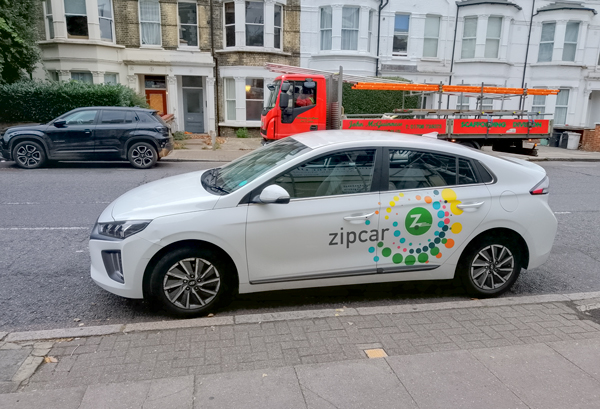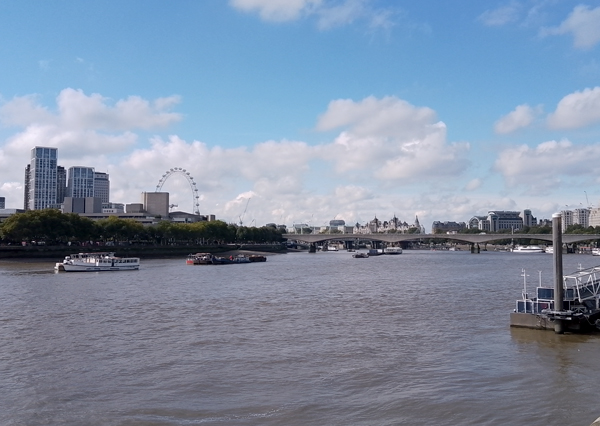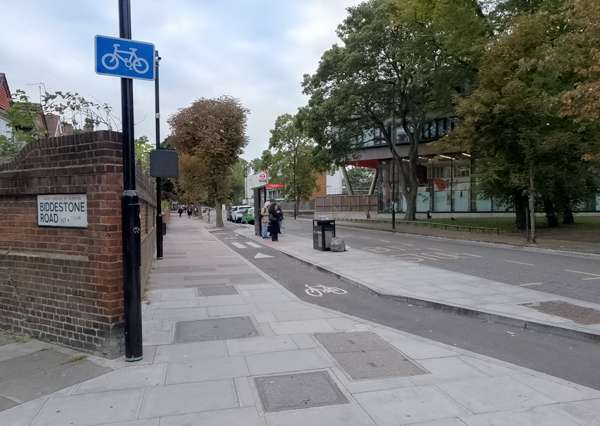3 Thoughts about Cycling City London

Here are three thoughts about cycling in London, from the point of view of an outsider, not a Londoner.
1) London is Now a Cycling City
When I was regularly in London in the late 1990s and early 2000s, there were people on bikes in the capital, but it was not a cycling city.
Now cycling is mass transport in London. It has become a cycling city.
This is Blackfriars Bridge just after morning rush hour.
Central London probably has the most cycling, and in the rest of the city the number of people using bikes varies from area to area, but I saw significant numbers of cyclists everywhere I went.
A variety of people use bikes – parents carefully taking their children to school, commuters, shoppers and visitors to London.

It’s easy to see why people choose to cycle around the city. Perhaps the main motivation can be summed up by the phrase ‘take back control’.
If you take the bus or the tube, you’re in the hands of the driver and Transport for London. If there’s a traffic jam, a blockage on the line or a strike, you’re stuck.
Driving in London must be frustrating even if you have the money to buy and run a car, and a place to keep it.
Private cars are also a blight on the city for everyone not in one at any given time. Despite the increasing popularity of bikes, there’s a huge number of motor vehicles nearly everywhere you go, causing danger, noise and pollution.
It could be enough to drive you to drink (and meat).

If you could get rid of 90% of the motor vehicles in London, quality of life would be transformed.
Car clubs could be a viable alternative for many.

2) Cycling is a Great Way to See London

Cycling is a great way to see London.
Although the tube is handy for getting around, as it’s underground views are limited!
When cycling, you have the privilege of seeing some of London’s best views for free – or at least for the price of a Santander Cycles day pass.
This is Embankment by Santander cycle.
When you’re cycling, it’s easy to pause whenever you want and take in the sights, such as the Royal Household Cavalry practising in Hyde Park.
You also get to see non-sights which can still be interesting, such as local carpet shops.

And you may wonder whether the shutters have been pulled down temporarily or permanently on TV and video sales and repair shops.

3) Just Enough Cycle Infrastructure Everywhere
London’s cycle infrastructure is patchy and mixed. No doubt this is partly because it is up to each London Borough to decide what they do with the roads in their area.
Nevertheless, London seems to have reached a tipping point where there is enough cycle infrastructure nearly everywhere (except perhaps Outer London) to make cycling a realistic option for most people.

Once you’ve passed that tipping point, then the local authorities probably feel obliged to make provision for cycling because there is significant demand.
Elsewhere in the UK, opponents of cycling argue that there’s no need to provide cycle infrastructure because not enough people cycle; and if their arguments succeed, not many people will cycle because it doesn’t feel safe.
London is no longer stuck in that Catch-22.
3 More Thoughts about Cycling City London follow in a separate post.

